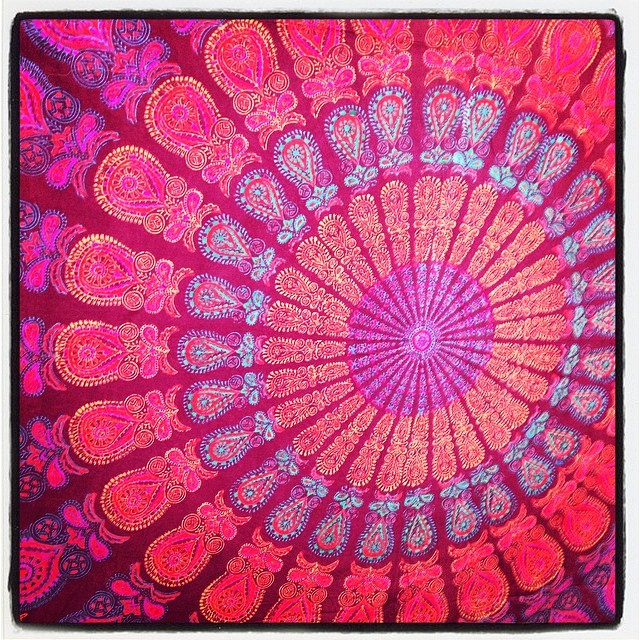
Mandalas represent a sacred geometry that emits and attracts positive energy. Sanskrit for “circle”, a mandala represents wholeness and the Divine, our relation to eternity, and unity between the world within our body and mind and the world outside.
Used in many spiritual traditions all around the world, the mandala emphasizes the interconnectedness of all life. The circular Aztec calendar is in the shape of a mandala. Tibetan Buddhists have long practiced the art of creating intricate mandalas out of colored sand, chanting and meditating as they work and upon completion, and then allowing the mandala to blow away in the wind, as a symbol of impermanence.
The zodiac circle in astrology is also a mandala, mapping universal and planetary energies and the way they relate to one another.
Even the Taoist yin yang symbol is a mandala, with the outer circle representing the divine universe, the white side Yin or the primordial feminine, and the black side Yang as the primordial masculine energy. The Ying and Yang co-exist together, dancing their cosmic dance, continuously transforming one into the other.
In every tradition, mandalas represent connection, between the viewer and the object, between all things. Energetically, the often concentric design of mandalas tends to visually attract consciousness and awareness to the center point, allowing focus to draw inward. This makes it very useful as a meditation tool, whether your conscious focus is on interconnectedness or not!
To use a mandala for meditation, clear away a quiet place where you can sit with your mandala clearly visible in front of you. Decide what your intention for this meditation is. Perhaps you want to foster feelings of peace, love, connection, joy, or relaxation. As you set your intention, you may want to choose a word that represents that feeling to you. It could be “love”, “ocean”, or any other word that helps you feel peaceful and present. “Ohm” is said to be the sound of the universe, and it always a great mantra. Let your gaze be gentle and soft, allowing yourself to blink normally. Try to just look, not thinking, planning, or daydreaming. Allow yourself to just be where you are. If you find your mind drifting, acknowledge it and gently return your awareness to the present. You can use your mantra to help yourself return to the moment, connect with your breath, and also imbue your mandala with that energetic quality. Breathe in through your nose, and as you exhale, say the mantra in your head or out loud. If your mantra is a longer word, you may want to say it (either internally or externally) with both parts of the breath. Use your intuition to guide you in breathing with your mantra; there is no wrong way to do it!
As the mandala is a visual representation of the interconnectedness of all things, anything and everything is accessible to you as you meditate on it as a point of focus or energetic power. The more you practice meditating with your mandala, the easier it will become to connect with the positive energy of the universe, at once wholly present in your body and intertwined in the cosmic unity of all things.
Get started on your mandala meditation journey with a mandala tapestry or bedspread here. Or check out our collection of wearable and decorative mandala art right here.
“The mind can go in a thousand directions, but on this beautiful path, I walk in peace. With each step, the wind blows. With each step, a flower blooms.”
–Thich Nhat Hanh